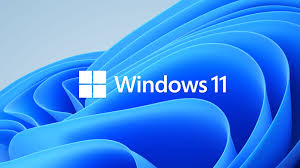Definition and Functions of Operating Systems

Definition and Functions of Operating Systems
Operating systems are fundamental to any computing device, whether it’s a personal computer, smartphone, server, or embedded system. Operating systems (OS) play a pivotal role in the functioning of computers, serving as the intermediary between the user and the hardware. They manage hardware resources, enable software applications to run, and provide a user interface. They play a crucial role in enabling user interaction, executing programs, and maintaining system stability.
Definition and Functions of Operating Systems
Functions of Operating System
The primary functions of an operating system can be categorized into several key areas:
1. Process Management
The OS handles the creation, scheduling, and termination of processes. It keeps track of each process’s status, whether running, waiting, or halted.
- Process Scheduling: Determine which processes should run and when, using algorithms to allocate CPU time efficiently.
- Process Synchronization: Ensure that multiple processes can run concurrently without conflicts.
- Inter-Process Communication (IPC): Facilitate communication and data exchange between processes.
By using scheduling algorithms, the OS ensures that each process gets adequate CPU time and that the system remains responsive. For example, when you open a web browser and a word processor at the same time, the OS manages these processes to avoid conflicts and maximize efficiency.
2. Memory Management
Memory management involves keeping track of each byte in a computer’s memory and allocating space to processes as needed.
- Memory Allocation: Allocate memory to processes based on their requirements.
- Memory Protection: Ensure that processes do not interfere with each other’s memory space.
- Virtual Memory: Use disk space as an extension of physical memory, allowing the system to handle larger workloads and multitasking.
The OS ensures that each application has enough memory to operate while preventing one process from using the memory allocated to another. It also handles memory swapping between the physical RAM and disk storage, which helps in managing larger applications without exhausting physical memory.
3. File System Management
Operating systems organize data into files and directories, making it easy for users and applications to store, retrieve, and manage information.
- File Organization: Organize files into directories and folders for easy access.
- File Permissions: Control access to files based on user roles and security policies.
- File Operations: Handle tasks such as creating, reading, writing, and deleting files.
The OS control access permissions, ensuring that only authorized users can access or modify specific files. For instance, when you save a document, the OS writes the data to the disk in an organized manner, allowing you to retrieve it later.
4. Device Management
The OS controls peripheral devices like printers, scanners, and external drives. It provides an interface for these devices, facilitating communication between the hardware and software components. For example: When you print a document, the OS sends the appropriate commands to the printer, ensuring that the task is completed successfully.
5. User Interface
Operating systems provide user interfaces, either graphical (GUI) or command-line (CLI), to facilitate interaction between the user and the computer. GUIs offer visual elements such as windows, icons, and menus, making it easy for users to navigate. CLIs, on the other hand, allow users to type commands to perform tasks. For example, Windows and macOS use GUIs, while Linux can use both GUIs and CLIs.